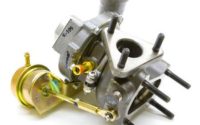Innovations Shaping the Global Two-Wheeler Market
Being a convenient mode of transport and an element of multi-modality in urban market, two-wheelers are rapidly increasing in demand across the globe. In 2021, the global production of two-wheelers reached to 160 million units. As automobile industry is witnessing a major transformation in recent years, the two-wheeler technology is constantly evolving, resulting into more efficient, powerful, safe, and enjoyable to ride vehicles. In 2021, the global two-wheeler market reached a value of USD108.73 billion, owing to rise in personal disposable income and rising urban population. Telematics and new technologies such as drive assistance systems are already being implemented into some of the commercial and passenger two-wheeler vehicles. The current trend of digital connectivity and electrification is swiftly expanding to the contemporary motorcycles and mopeds, which is projected to positively influence the global two-wheeler market growth in the coming years.
Here are the top technologies changing that are expected to make two wheelers even more efficient and safer for the riders.
Anti-lock Braking System
Most motorcycle manufacturers are providing Anti-lock Braking System (ABS) as either a standard or optional feature for the riders. ABS is essentially a vehicle safety device that prevents motorcycle’s wheels from locking during braking. ABS uses sensors to determine wheel speed as well as when the wheel is about to lock. The feature is really helpful for reducing braking distance, providing better control on the road, improving rider safety, and minimize the number of road accidents.
Slipper Clutch
The slipper clutch has become one of the selling points for high revving motorcycles under 400cc. Designed specifically for performance-oriented bikes, the slipper clutch reduces the effect of engine braking when rider happens to decelerate. The slipper clutch disengages when the rear wheel tries to drive the engine faster than it would under deceleration, which help prevent the wheel from losing traction and ensure the gearbox is not damaged when shifting gears at a time.
E-bikes with Longer Range and Small Batteries
As e-bikes are rapidly gaining traction, manufacturers are introducing new features to boost to make their vehicle stand out. The gigantic batteries that require frequent recharging in e-bikes had remained a restricting factor for e-bike owners. The batteries are not only heavy but also reduce the maximum speed of the bikes. Thus, new e-bikes are coming with smaller batteries that provide long range and reduces the hustle of frequent charging, making environment-friendly rides safer and enjoyable.
Traction Control System (TCS)
Traction control is an extremely essential feature in large-displacement motorcycles, which prevent motorcycle accidents at faster speeds. Traction control systems are mainly found in sports bikes or nakeds in usually 650cc or middleweight category. The technology is built into the engine control unit (ECU) of the motorcycles and come with a set of sensors that allow motorcycles to tell where it is and what it is doing, whether leaning, braking, or going full throttle. TCS can interrupt the power going in rear wheels by cutting the power momentarily when if it finds rider in dangerous road conditions.
According to TechSci Research report on “Global Two-Wheeler Market By Vehicle Type (Scooter/Moped and Motorcycle), By Engine Capacity (Up to 125cc, 126-250cc, 250-500cc and Above 500cc), By Region, Competition, Forecast & Opportunities, 2017-2027”, the global two-wheeler market is anticipated to grow at a formidable rate during the forecast period. The market growth can be attributed to the rising demand for high fuel efficiency, lower emissions, and price attractiveness. Besides, launch of new models and increasing congestion levels in urban areas are expected to boost the market growth.
Contact
Mr. Ken Mathews
708 Third Avenue,
Manhattan, NY,
New York – 10017
Tel: +1-646-360-1656
Email: [email protected]



